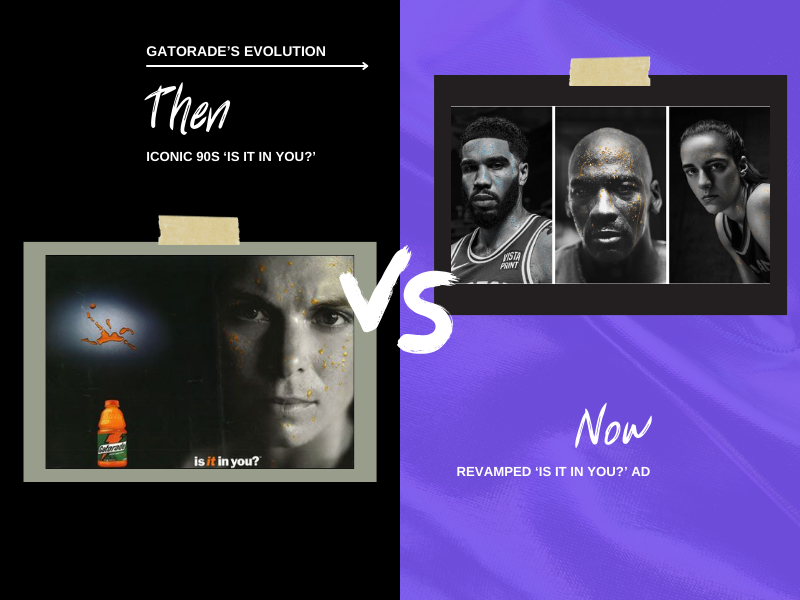
Hey friends! We’re less than a week away from Cannes and we can’t wait to check out the latest and greatest from brand marketers, technology providers, and agencies (email us if you’re headed to the event). This week, we wanted to shine a light on Pride Month and how brands can do a better job of authentically supporting initiatives that align with their core values (we too, are sick of the rainbow washing). Additionally, we looked at how nostalgia is having a moment and a cautionary tale of a campaign that brought on the cringe. Shameless Plug: Have you heard about our new Amplify tool? We created a one-stop solution that leverages AI to help develop supporting content that enables comms pros to maximize the impact of earned media. Reach out for a free demo using a recent piece of coverage of your choosing!Thanks for everything!-Greg & Becky
Be respectful: How to appropriately move forward with themed celebrations
TL;DR: PR pros and marketers love a celebratory month as it’s always a great opportunity to lean into a public conversation and craft timely content. But it’s important to remember that these themed months celebrate specific communities and sometimes in acknowledging these months, brands may risk diluting (or worse: offending) the real purpose. Before jumping into ‘month’ celebrations, brands should evaluate their values and ongoing efforts to ensure they’re doing the work that truly supports the cause or community at hand. This Pride Month, take a look at the brands that are doing deep work, not just simply redoing a logo in rainbow colors.Takeaway: According to HR expert Paul Wolfe, companies must ask themselves, “Are you in it because it’s the right thing to do? Or are you in it because you think your employees want it, or your consumers?” The main issue brands face across these types of campaigns is being seen as performative. For example, last year, Bud Light partnered with transgender influencer Dylan Mulvaney, then withdrew from the campaign when it sparked a boycott, leaving Mulvaney and LGBTQ+ supporters feeling taken advantage of. Wolfe recommends brands go to the source (ask employees how you can honor Pride Month), focus on education (not just entertainment), and remember that it’s not just one month (work on your support of the LGBTQ+ community year-round).Consider:
- Are you interested in creating content around a current month’s celebration (ex. Pride Month) because everyone else is doing it? Or do you genuinely think it’s the right thing to do?
- How are you showing up for these communities when it’s not a celebratory month?
Bring new life to an old campaign: Gatorade revived its iconic 90s ‘Is It In You?’ tagline

TL;DR: For the millennials who remember Gatorade’s iconic ‘Is It In You?’ tagline, the brand has brought it back for its largest-ever campaign, aimed at encouraging the next generation of athletes to ignore the noise. With 53% of Gen Z athletes reportedly no longer playing sports because of social pressure and unrealistic expectations, it’s a necessary message heading into this summer of sports – starting with the NBA Finals and continuing through the Paris Olympics.Takeaway: What’s that old phrase… If it’s not broken, don’t fix it? Gatorade is well-primed to take this approach, given its long history and its younger audience’s attraction to nostalgia. The tagline resonated with young athletes once, so it’s fair to assume it can do it again. The campaign combines the iconic tagline with an ad spot featuring an all-star roster of athletes, including Caitlin Clark, Jayson Tatum, Sydney McLaughlin-Levrone, and Josh Allen, narrated by long-time brand partner Michael Jordan. Gatorade uses these icons to drive home the message of the campaign and knit nostalgia with the new age: while the games have changed, the determination of young athletes and underdogs remains the same.Consider:
- Nostalgia is a major tactic right now, resonating with audiences of all ages. How can you revive an old campaign and make it new again?
- Gatorade’s campaign isn’t so much a product push but rather an emphasis on the lifestyle and type of person who uses the product. What would your version of a similar campaign look like?
Beware of cringe: Trying to make sense of Canva’s rap battle
TL;DR: If you haven’t seen Canva’s faux rap battle between “a graphic design content creator” and “a concerned CIO” from its Canva Create event, you may have heard about it. That’s because the performance went viral on X for being, as startup founder Alex Cohen called it, “the most cringe sh*t I have ever seen in my entire tech career.” The rap performance was intended to call attention to Canva’s strong design offerings as well as its strong security offerings. In recent years, more tech brands have tried to be edgy, entertaining, and relatable with their approach. But taking such risks can often do the exact opposite and make brands seem out-of-touch.
Takeaway: It’s not that wild to think that a creative SaaS company like Canva could pull off such a stunt. They’re a modern, artistic, beginner-friendly brand, in contrast to overly complicated and expert software like Adobe’s Creative Cloud. If any design software brand were going to try this, it would probably be Canva. Yet, according to audience commentary, this performance felt forced – like a scene out of HBO’s tech parody Silicon Valley. While the common consensus was that this performance was a major moment of corporate cringe, it wasn’t for nothing. According to a Canva spokesperson, 50 million people saw the rap battle within 48 hours, leading to a 2500% increase in people talking about Canva Enterprise on social media. While the numbers seem impressive, this is a prime example of why metrics need context. On paper, lots of chatter around Canva may seem like a success. But if you look deeper at the keywords and messages, you’ll see that the conversations weren’t positive. There’s much more to a marketing strategy than simply standalone vanity metrics. It’s about quantity and quality.Consider:
- Listen to what your audiences want from you. Is what you’re doing authentic to your brand, or just forced?
- Don’t just look at the high-level view of your metrics, analyze the quality of the interactions. What are people saying about your brand in their conversations? How are people feeling about your brand?




